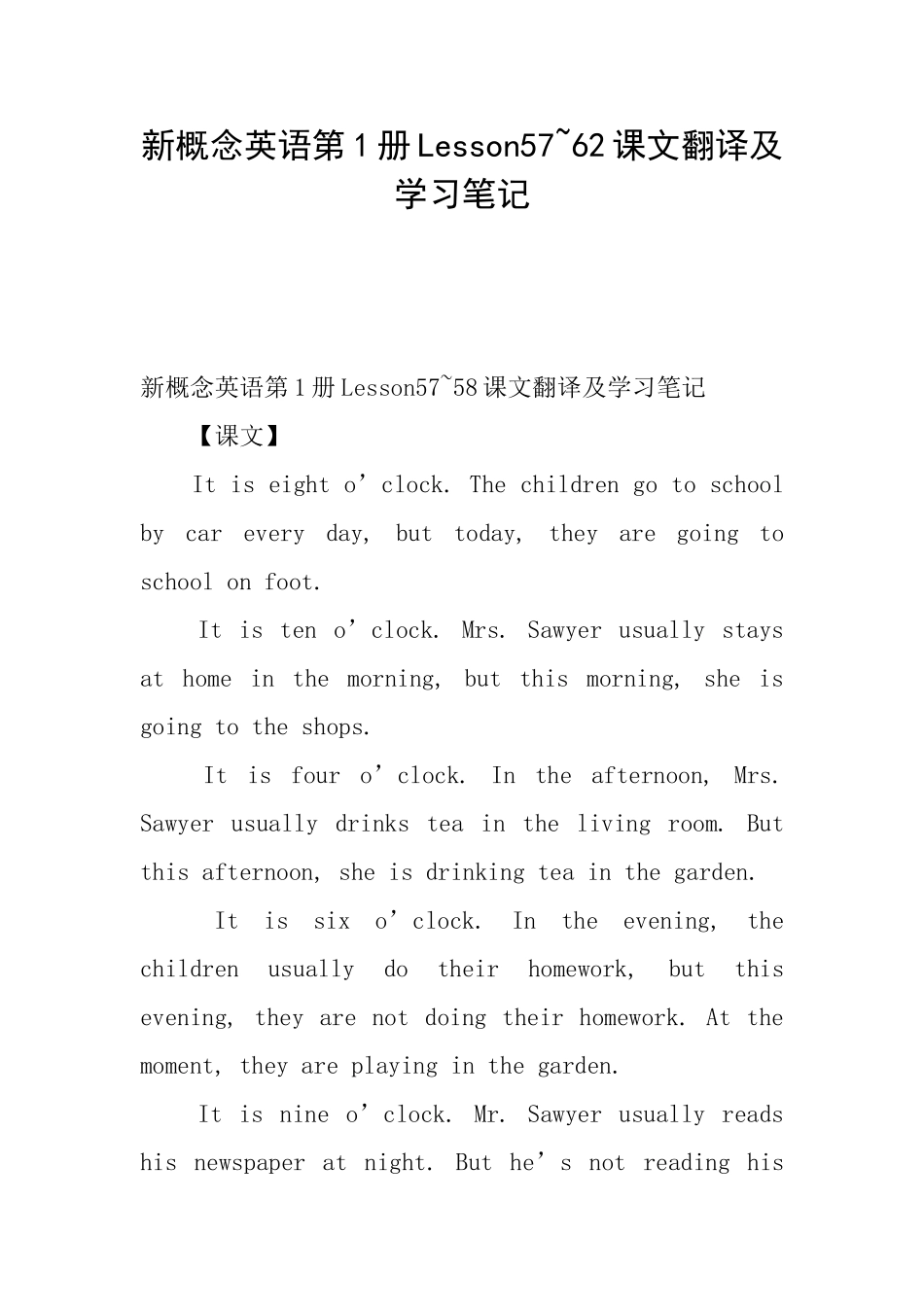新概念英语第 1 册 Lesson57~62 课文翻译及学习笔记 新概念英语第 1 册 Lesson57~58 课文翻译及学习笔记 【课文】 It is eight o’clock. The children go to school by car every day, but today, they are going to school on foot. It is ten o’clock. Mrs. Sawyer usually stays at home in the morning, but this morning, she is going to the shops. It is four o’clock. In the afternoon, Mrs. Sawyer usually drinks tea in the living room. But this afternoon, she is drinking tea in the garden. It is six o’clock. In the evening, the children usually do their homework, but this evening, they are not doing their homework. At the moment, they are playing in the garden. It is nine o’clock. Mr. Sawyer usually reads his newspaper at night. But he’s not reading his newspaper tonight. At the moment, he’s reading an interesting book. 【课文翻译】 现在是 8 点钟。孩子们每天都乘小汽车去上学,而今日,他们正步行上学。 现在是 10 点钟。上午,索耶夫人通常是呆在家里的,但今日上午,她正去商店买东西。 现在是 4 点钟。下午,索耶夫人通常是在客厅里喝茶,但今日下午,她正在花园里喝茶。 现在是 6 点钟。晚上,孩子们通常是做作业,而今日晚上,他们没做作业。此刻,他们正在花园里玩。 现在是 9 点钟。索耶先生通常是在晚上看报,但今日晚上他没看报。此刻,他正在看一本有趣的书。 【生词】 o’clock adv. 点钟 shop n. 商店 moment n. 片刻,瞬间 【知识点讲解】 1. 在今日的课文中,我们看到了一般现在时态和现在进行时态的混用。课文中给出了一些非常明确的“节点”或者说是“提示点”,来暗示我们接下来所要用到的时态。 比如当 everyday 和 usually 出现的时候,我们知道这是在描述正常的、每天都会出现的状态。因此用了一般现在时态; 而当 today, this morning, this afternoon, at the moment(意思是“当下、此刻”) 等短语出现时,提示我们说的是当前的状态,所以用的是现在进行时态。 2. 今 日 还 学 到 了 表 达 几 点 钟 的 句 子 : It’s XX o’clock. 在口语中也...


